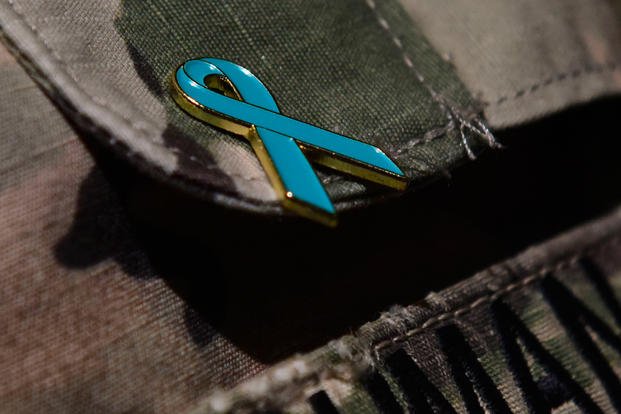Capt. Tiarra McDaniel is a dual-military, active-duty Army officer with two children.
Recent case reports and media coverage have sparked many recommendations to improve the Army's Sexual Harassment and Assault Response and Prevention, or SHARP, and Equal Opportunity, or EO, programs.
Defense Secretary Lloyd Austin has said that addressing the problems in both programs is a "leadership issue," adding, "We must not be afraid to get creative."
Reports of sexual assaults in the ranks have gone up steadily, according to the Department of Defense Annual Report on Sexual Assault in the Military. The number of sexual assault reports from service members increased by 3% from 6,053 to 6,236 in fiscal 2019 compared to the previous year.
The focus on sexual harassment and sexual assault was magnified in 2020 following the disappearance and murder of Pfc. Vanessa Guillen at Fort Hood, Texas. As a result, the Fort Hood Independent Review Committee was appointed to examine the base's command climate and culture. Its groundbreaking report revealed a lack of soldier confidence in the SHARP program, which is meant to help them. The report highlights a lack of confidence in reporting because of "fear of retaliation, ostracism, embarrassment, and breach of confidentiality" and concerns about false accusations.
Fiscal 2020 Army active-duty demographics report that 55% of soldiers are white, 21% Black, 16% Hispanic, 5% Asian, and 3% other. More than half of minority service members say they have seen or experienced racism among their fellow troops. Military Times released a poll showing that more than half of minority service members and one-third of troops overall had personally witnessed white nationalism and white supremacy within the ranks.
The Fort Hood report also revealed that 3% to 5.5% of soldiers experience racial and sexual discrimination at certain Army installations. This data was collected by the Defense Equal Opportunity Climate Survey, or DEOCS, from 2014 to 2019.
However, the Fort Hood Review Committee determined that the results, interviews and other forms of data collection were insufficient to conclude that current practices are ineffective. Consequently, the aforementioned data hints at possible inconsistencies and a need for equal opportunity to receive further attention.
SHARP/EO military professionals are an integral part of the Army's success, but manning for and utilization of both programs must be addressed. Manning for Equal Opportunity Advisers, or EOAs, is governed by the Military Table of Organization and Equipment. Army Regulation 600-20 sets forth the requirements for personnel interested in serving in those positions. Because of the priority set on the services provided by EOAs, manning is visible Army-wide. The credentialing process for an EOA includes an 11-week course at the Defense Equal Opportunity Management Institute, and EOA personnel are usually stabilized at one location for three years.
In contrast, SHARP assignments show their lack of priority within the Army. SHARP personnel come from borrowed military manpower. They are command selected, and there is no visibility Army-wide. The SHARP program allocates a single full-time sexual assault response coordinator and victim advocate to each brigade. The credentialing process and six-week SHARP Career Course leave little time for the representatives to perform their valuable services because they have only a two-year stabilization period.
The current Army SHARP/EO program structure does not allow career continuation or progression; rather, they are nominative positions open to volunteer applicants who meet predetermined criteria.
So, what are the long-term implications of continuing the current structure? Right now, we use the DEOCS to capture data on possible EO issues within formations. But is this enough to identify and combat grass-root issues?
No regulation or Department of the Army pamphlet directs formal career progression possibilities for military SHARP/EO professionals. As one can imagine, continuing the current program structure means no continuity or growth of knowledge -- instead, there is a lack of experience and expertise.
I believe we need to create functional areas and military occupational specialties specifically for SHARP/EO professionals. A functional area is a grouping of officers by technical specialty or skill and requires education, training and experience. An officer usually receives their functional area between years five and six of service. Currently the Army has three Functional Categories: Maneuver Fire and Effects, Operations Support and Force Sustainment. Functional Categories consist of officer branches and functional areas; warrant officer and enlisted military occupational specialties; and civilian occupational series. It is my belief that the Force Sustainment category should house the functional area because its focus is to train, supply and maintain fellow soldiers. Currently, Force Sustainment is the only area without any established functional areas.
The programs should target applicants with a degree in psychology, social work or sociology. Recommended certifications should include -- but not be limited to -- diversity and inclusion, cultural sensitivity, and human behavior. Applicants must be command (O-6) recommended, with a screened background history and completed mental evaluation before approval to continue. Candidates should be able to maintain a top-secret security clearance.
In addition to the training required to certify as a SHARP/EO professional, there should be required on-the-job training (a minimum of six months) before releasing them to the field. Soldiers in the rank of staff sergeant promotable and above should have the option to reclassify in the SHARP/EO MOS.
The schooling should be longer than the average four months it takes to certify any other MOS. After completion, certified and qualified SHARP/EO personnel should work in a structure similar to Trial Defense Services, with integrators located or deployed to work at brigade and battalion level. Service members should be required to recertify on a no-notice basis every two years.
These recommendations are not an immediate solution; however, I think this is a risk the Army should be willing to take. The long-term effects of creating and implementing this career opportunity include sustainability, growth, continuity and a better posture for our force as we continue to navigate this complex environment.
We must create a plan that will pass the test of time and not falter between generations.
-- The opinions expressed in this op-ed are those of the author and do not necessarily reflect the views of Military.com. If you would like to submit your own commentary, please send your article to opinions@military.com for consideration.















